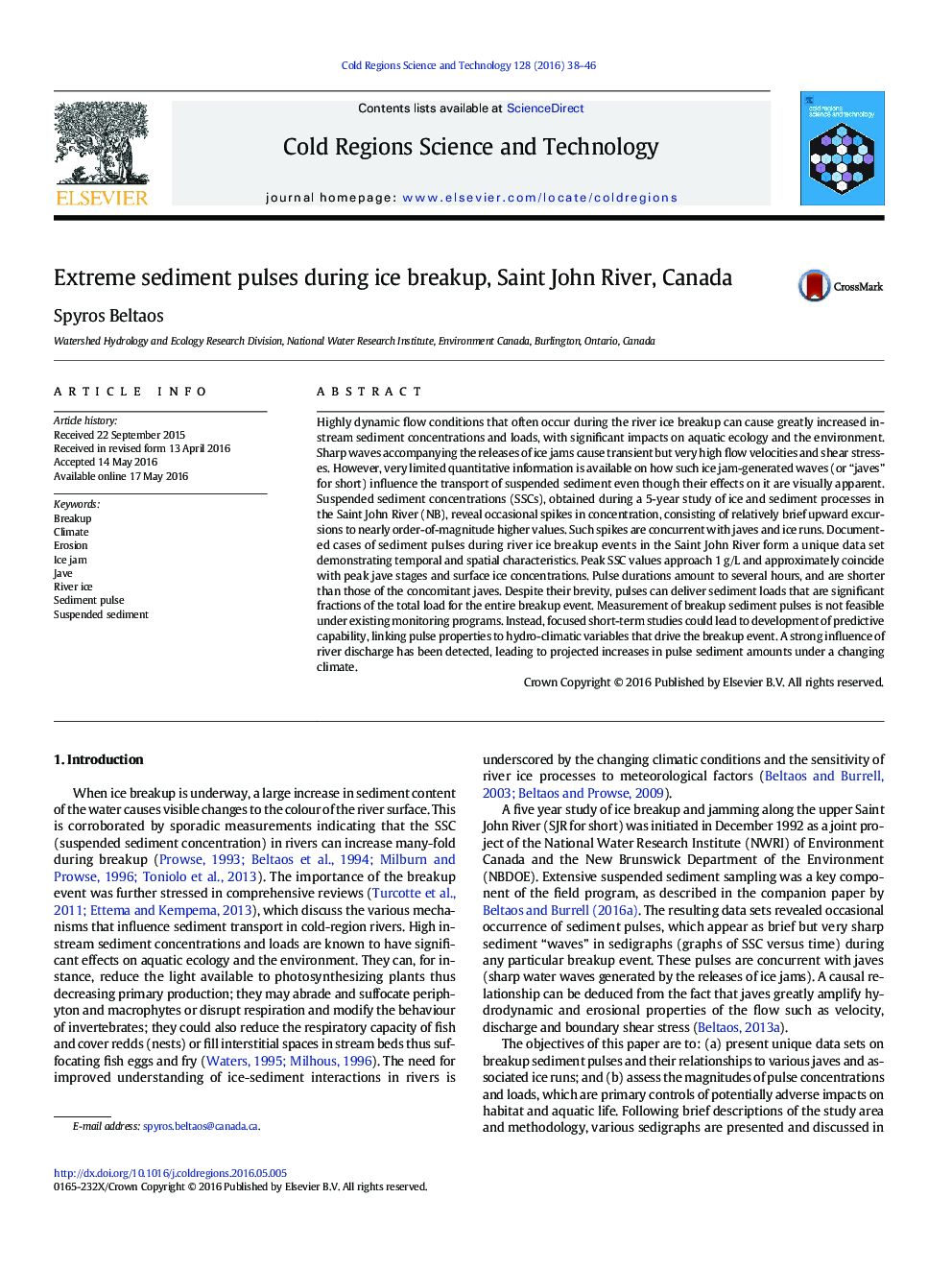| کد مقاله | کد نشریه | سال انتشار | مقاله انگلیسی | نسخه تمام متن |
|---|---|---|---|---|
| 4675662 | 1634436 | 2016 | 9 صفحه PDF | دانلود رایگان |
• High suspended sediment concentrations at breakup affect river water quality.
• Detailed data sets have been obtained for the first time in Saint John River.
• Extreme sediment pulses occur when ice jams release.
• Pulse concentrations are linked to amplified erosive capacity of javes.
• Pulse loads can be significant fractions of total breakup loads.
Highly dynamic flow conditions that often occur during the river ice breakup can cause greatly increased in-stream sediment concentrations and loads, with significant impacts on aquatic ecology and the environment. Sharp waves accompanying the releases of ice jams cause transient but very high flow velocities and shear stresses. However, very limited quantitative information is available on how such ice jam-generated waves (or “javes” for short) influence the transport of suspended sediment even though their effects on it are visually apparent. Suspended sediment concentrations (SSCs), obtained during a 5-year study of ice and sediment processes in the Saint John River (NB), reveal occasional spikes in concentration, consisting of relatively brief upward excursions to nearly order-of-magnitude higher values. Such spikes are concurrent with javes and ice runs. Documented cases of sediment pulses during river ice breakup events in the Saint John River form a unique data set demonstrating temporal and spatial characteristics. Peak SSC values approach 1 g/L and approximately coincide with peak jave stages and surface ice concentrations. Pulse durations amount to several hours, and are shorter than those of the concomitant javes. Despite their brevity, pulses can deliver sediment loads that are significant fractions of the total load for the entire breakup event. Measurement of breakup sediment pulses is not feasible under existing monitoring programs. Instead, focused short-term studies could lead to development of predictive capability, linking pulse properties to hydro-climatic variables that drive the breakup event. A strong influence of river discharge has been detected, leading to projected increases in pulse sediment amounts under a changing climate.
Journal: Cold Regions Science and Technology - Volume 128, August 2016, Pages 38–46
